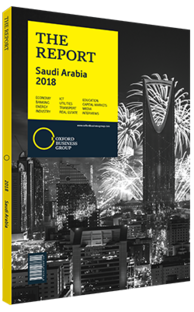Prince Naif bin Sultan bin Mohammed bin Saud Al Kabeer, Chairman, Zain Saudi Arabia: Interview

Interview: Prince Naif bin Sultan bin Mohammed bin Saud Al Kabeer
To what extent are unlimited data services sustainable from a profitability standpoint?
PRINCE NAIF BIN SULTAN BIN MOHAMMED BIN SAUD AL KABEER: The current wave of phenomenal growth in mobile data services and traffic is driving connections and smart phone penetration ever higher. Zain Saudi Arabia users consume more than 4000 TB of data on a daily basis. As a point of reference, the amount of data on the web in 2000 was thought to be only 8000 TB. There are challenges for operators in differentiating and monetising value propositions in an unlimited plan environment, while staying on the right side of net neutrality legislation. Today unlimited plans are unsustainable as they require massive investments in infrastructure and provide minimal monetisation opportunities. What is sustainable for the industry is to deliver wider customer choice; with different offers at different throughput rates and levels of GB consumption, with an array of pricing plans that allow customers to make smart choices and select the most suitable plan.
All technologies need to be leveraged to manage increased broadband consumption, including hybrid services. It is a smarter practice to deliver super-fast broadband based on a mix of fixed and wireless technologies to ensure both the customer and the operator realise value. Total reliance on one technology may lead to a very long payback period, which means more limited customer choice and less optimal pricing plans.
What do you expect to be the main drivers of telecoms profitability in the short to medium term?
PRINCE NAIF: The telecommunications sector needs to focus on fundamental goals including digitisation, customer service and operational efficiency. We need to deal with customers in a transparent way and consistent manner. Profitability will be affected by machine-to-machine (M2M) and internet of things (IoT) communications and new capital expenditure. Specifically, investment in infrastructure upgrades including speed, throughput and service stability are critical to prepare for a more dynamic and competitive business environment and enhance long-term profitability.
Broadly speaking, four forces could potentially shape the future of telecoms profitability in Saudi Arabia. First, the advent of mobile money, IoT and M2M, with global analysts forecasting 10bn to 50bn connected devices by 2020, up from 1bn in 2010. Second, cloud computing offers opportunities for cost reduction, capital expenditures to operating expenditures conversion, and reaching new customers and businesses. Third, over-the-top service providers are riding a digital wave and creating valuable ecosystems on top of communication networks. Lastly, there is a global and unrelenting move to an all-IP network, made possible by LTE. This is a key enabler of the other forces, fostering the growth of big data and peer-to-peer technologies.
How is the competitive landscape impacting service and investment levels in the Kingdom?
PRINCE NAIF: Although the Saudi market faces challenges in terms of decreasing subscribers and increased competition, the telecoms sector remains fundamentally strong. The value of the telecoms sector is estimated at SR180bn ($48bn), with over SR50bn ($13.3bn) in capital investment and a contribution to GDP and non-oil GDP of 6% and 10%, respectively. The strong performance Zain witnessed in the first half of 2017 can be attributed to the ongoing focus on improving the company’s data, marketing and customer service initiatives, along with improved operating efficiencies and a 15-year license extension. During the second quarter of 2017 Zain successfully secured an additional 1800 MHz spectrum which is critical to the delivery of high-quality data services across the Kingdom. As competition intensifies quality of service cannot be compromised, as it influences customer loyalty and the customer retention rate. Lastly, the competitive environment has boosted LTE penetration and stimulated the expansion of attractive value-added services.
You have reached the limit of premium articles you can view for free.
Choose from the options below to purchase print or digital editions of our Reports. You can also purchase a website subscription giving you unlimited access to all of our Reports online for 12 months.
If you have already purchased this Report or have a website subscription, please login to continue.

